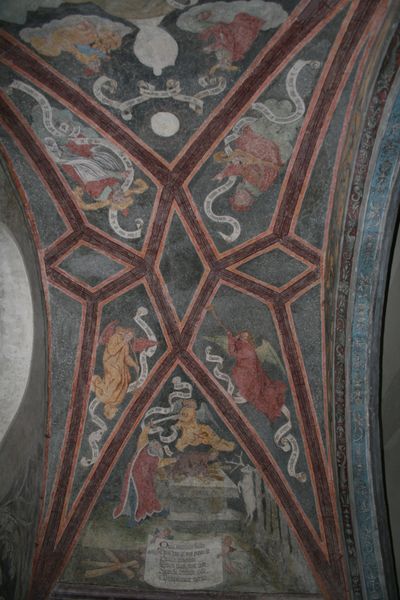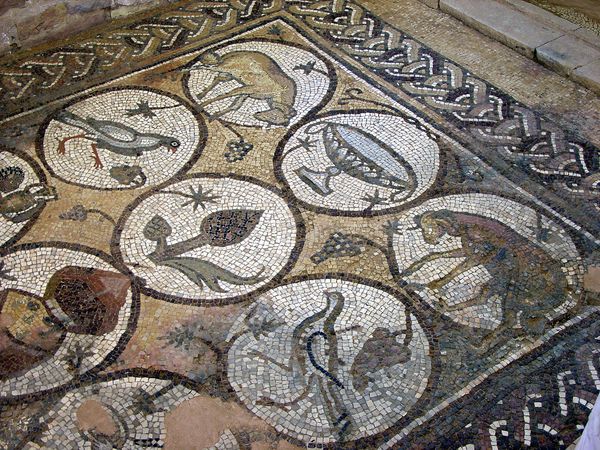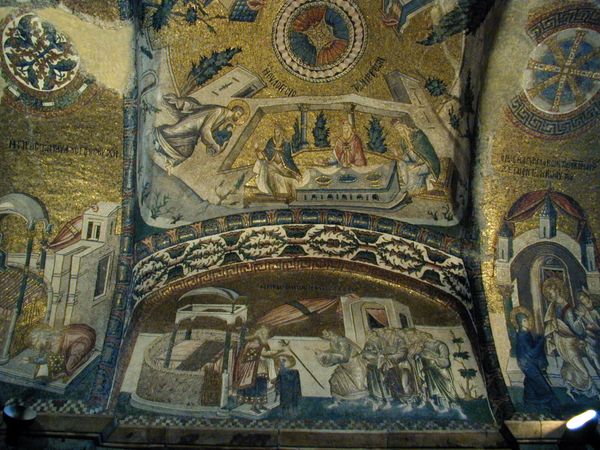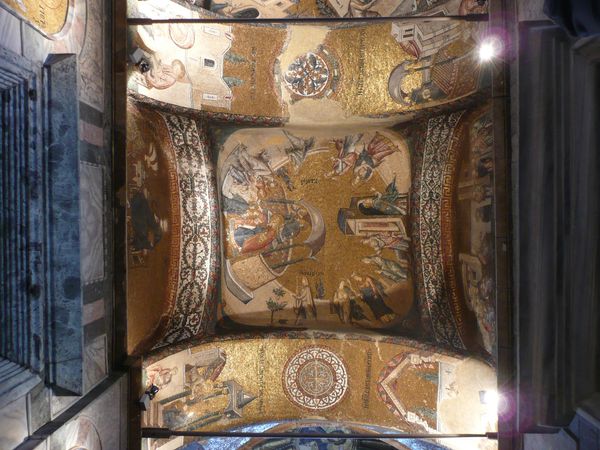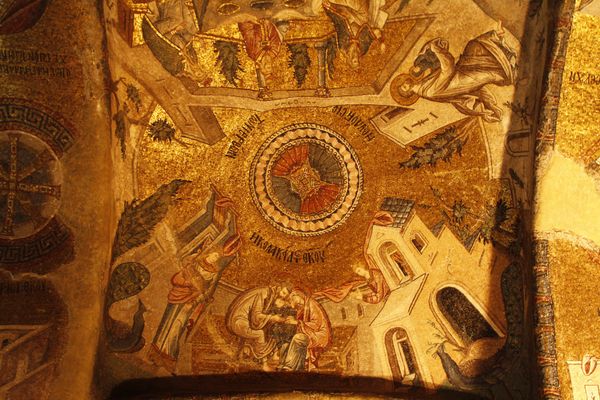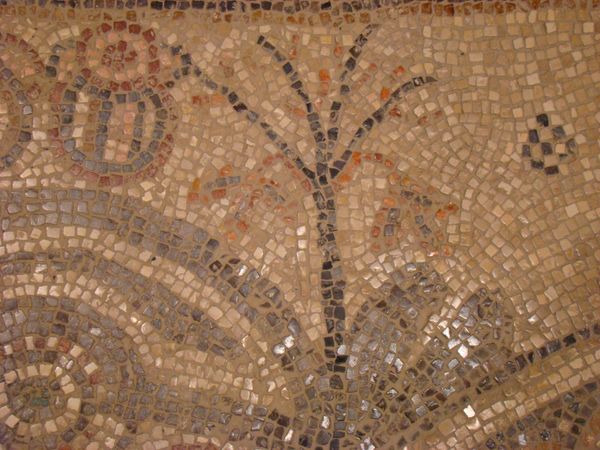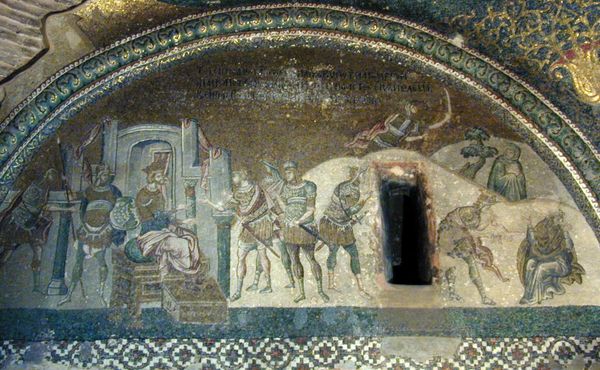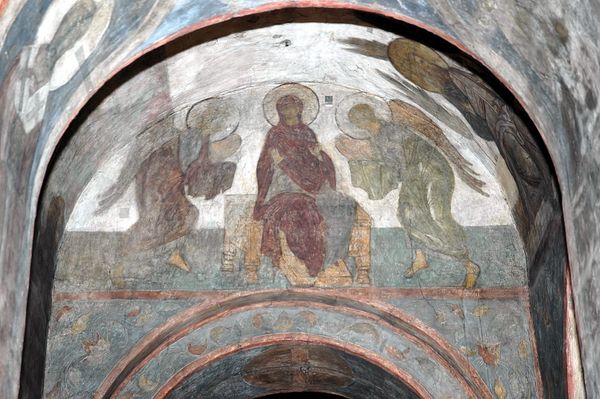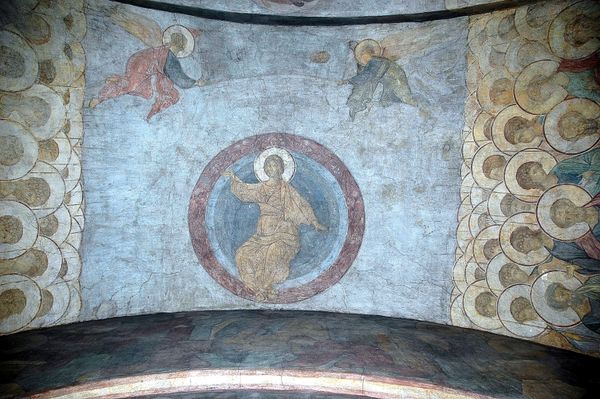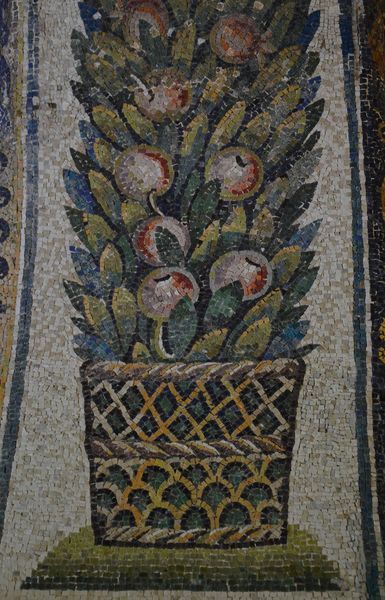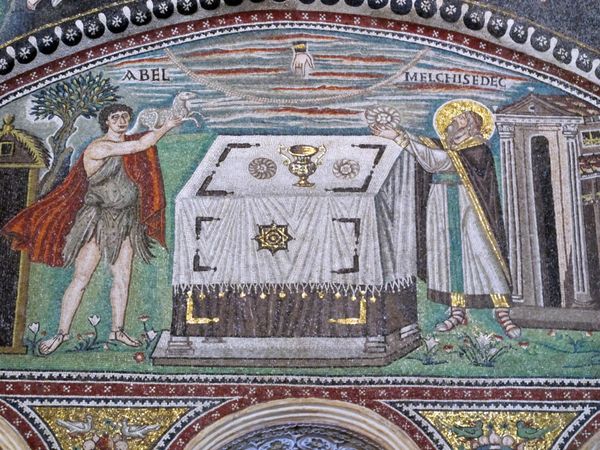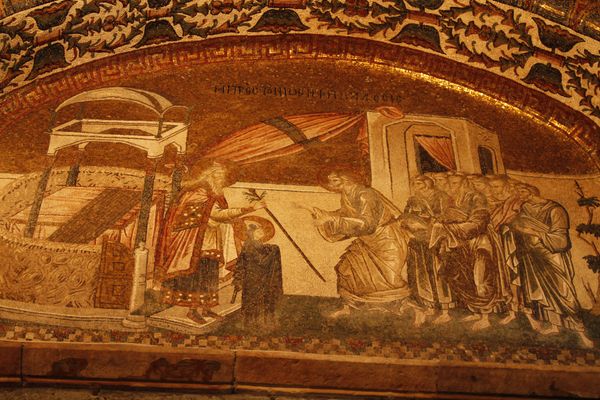
mosaic, tempera
#
mosaic
#
byzantine-art
#
tempera
#
sculpture
#
historic architecture
#
traditional architecture
#
history-painting
#
historical building
Copyright: Public domain
This mosaic of the Temptation of Christ was made by Byzantine artisans at the Chora Church in Istanbul. They worked with tesserae, small pieces of colored glass, stone, and ceramic, to create a glittering image, set into wet plaster. The material itself dictates the image. Each individual tessera is set at a slightly different angle to reflect light, giving the mosaic a vibrant, shimmering quality. The image appears to move as you walk past it. The labor-intensive process involved in creating mosaics imbued them with cultural significance. Highly skilled artisans spent months carefully placing each tessera, following established artistic traditions passed down through generations. Although mosaic has ancient roots, the Byzantines brought it to new heights of sophistication. Mosaics like this one were not simply decorative; they were powerful statements of faith and imperial authority. The immense labor required to produce these mosaics reinforced the power of the Byzantine Empire, demonstrating its ability to command resources and skilled labor. The enduring beauty of this mosaic challenges our modern distinctions between craft and fine art.
Comments
No comments
Be the first to comment and join the conversation on the ultimate creative platform.
